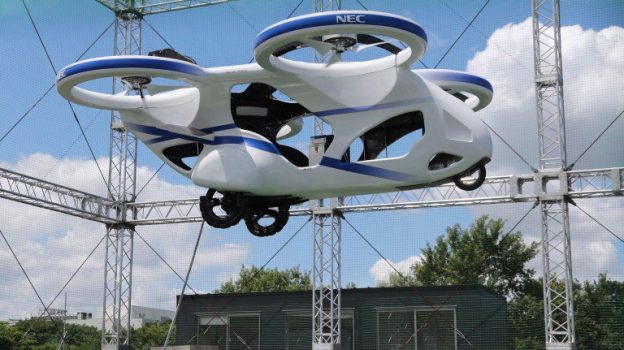 The futuristic world could be closer than we thought as Japan has successfully tested a flying car which was able to hover steadily for about a minute using its four propellers.
The futuristic world could be closer than we thought as Japan has successfully tested a flying car which was able to hover steadily for about a minute using its four propellers.
The two brief demonstrations from electronics firm, NEC which unveiled the technology at a facility in the city of Abiko, located about 22 miles from Tokyo took place inside a giant cage as a precaution.
The Japanese government, which said it aims to have people using flying cars by 2030 has backed the construction of a huge test course in Abiko, an area previously devastated by the 2011 tsunami and nuclear disasters in Fukushima.
There are also hopes that the flying cars would be used to connect islands in the Mie resort area which is frequented by Hollywood celebrities.
Japanese government officials say the flying cars have been designed for unmanned flights to carry out deliveries, adding that the machines could also be used in disaster relief operations.
There are however still huge hurdles to overcome before flying cars can become commonplace across the world, including battery life, the need for regulations and safety concerns.
Flying cars, often called Electric Vertical Take-off and Landing aircraft (EVtol) are electric aircraft or hybrid electric vehicles with driverless capabilities and the ability to take off and land vertically.
The new vehicles also aim to be an improvement on helicopters, which are expensive to maintain, noisy to fly and require trained pilots.
In 2017, a flying car by another Japanese firm, Cartivator proved unsuccessful after it crashed during a demonstration but officials of the company say they have since developed their technology which could make their machines last longer in the air.

Trump’s Massive Tariffs Take Effect, Deepening Global Trade War
Global Markets Plunge As Trump’s Sweeping Tariffs Spark Recession Fears
Devastating 7.7 Magnitude Earthquake Rocks Southeast Asia, Killing Multiple People
Trump Announces Sweeping 25% Tariffs On Imported Cars And Parts